










more photos
Site information
near Zagazig
dawn to dusk, daily
E£20 entry fee
E£5 camera
E£100 video
relevant links
history
2nd intermediate period
dynasty XV
new kingdom
dynasty XIX
ramesses I
Temple
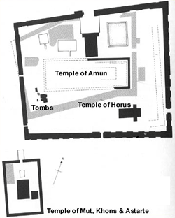 The major attraction of Tanis is the statuary tumbled all over, but there are teh faint remains of a temple dedicated to Amun here, although only foundations remain. Two huge mudbrick walls surround the entire site, and the faint walls of the temple pylon itself can be found.
The major attraction of Tanis is the statuary tumbled all over, but there are teh faint remains of a temple dedicated to Amun here, although only foundations remain. Two huge mudbrick walls surround the entire site, and the faint walls of the temple pylon itself can be found.
Very little rmeains of any of the walls -- indeed, looking at the map at left, it is hard to compare any of the structures we saw with the plan. The French have been excavating this site, and have discovered the tombs, the walls of the temple, a temple of Horus, and the faint remains of a temple of Mut.
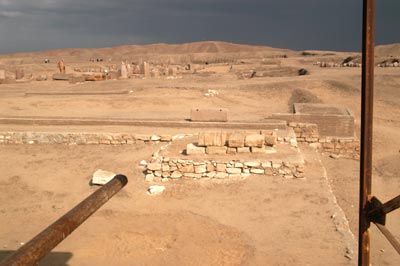
faint foundations of the temple
Almost nothing remains of the temple of Amun here (except the perimeter walls that surround the entire necropolis. It's likely that these walls are reconstructions of stone found at the site.
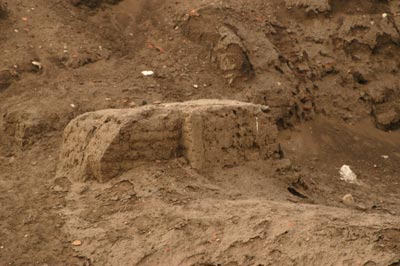
mudbrick walls that surround the site
Rulers from the 21st and early 22nd Dynasties added to the temple complex, and Nectanebo I (380-362 BC) used stone from earlier building projects of Sheshonq and Psamtek to construct the sacred lake.
The nilometer and huge cisterns remain, which is impressive, considering the distance that the modern nile is to the site. Tanis sits up a huge hill and I can only surmise that it was surrounded by water at one time, to fill the sacred lake and the nilometer.
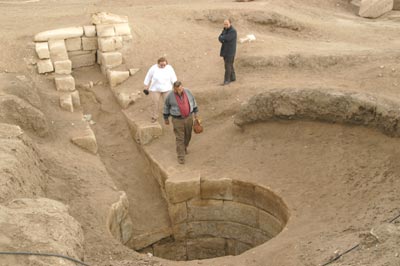
the cistern (well) on the site, connected to a nilometer, shown below
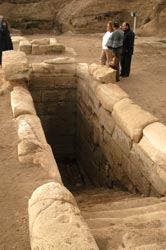 Nearly all temples have a nilometer -- it was used to track the inundation of the Nile and predict the crops -- and thus set the tax rates. A good inundation meant good crops, and thus the pharaoh and the priests could levy higher taxes.
Nearly all temples have a nilometer -- it was used to track the inundation of the Nile and predict the crops -- and thus set the tax rates. A good inundation meant good crops, and thus the pharaoh and the priests could levy higher taxes.
In some cases you can walk down to the bottom of the nilometer and see the markings. The shaft on Elephantine has depths written in several different languages -- hieroglyphs, demotic, greek, and others.
A few bare foundations are all that remain, but you can make out the outlines if you really look (and have a good imagination!)